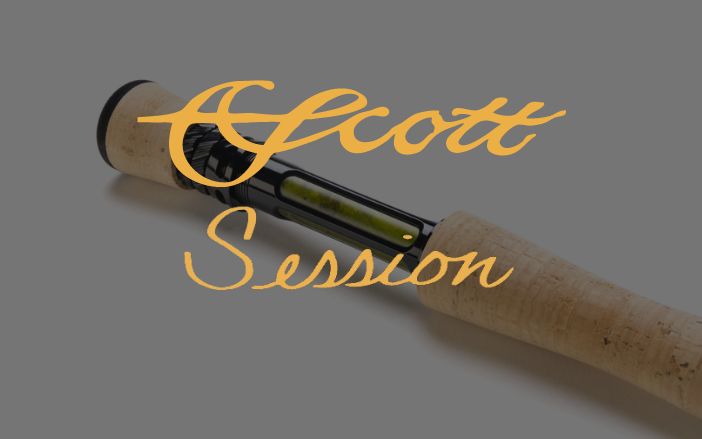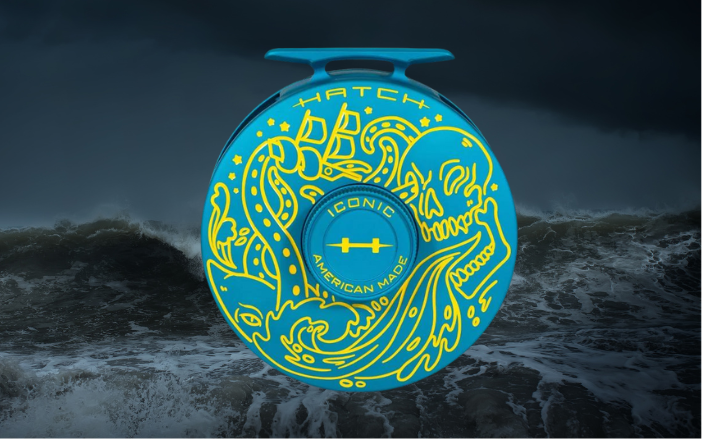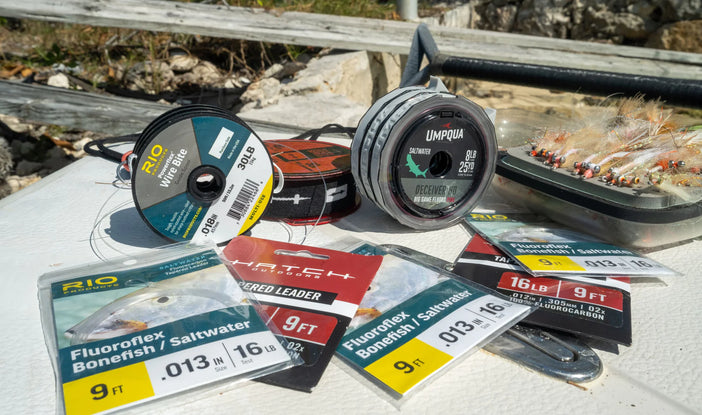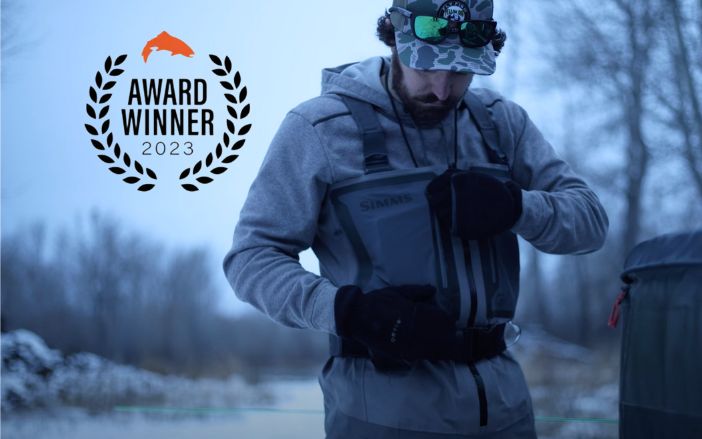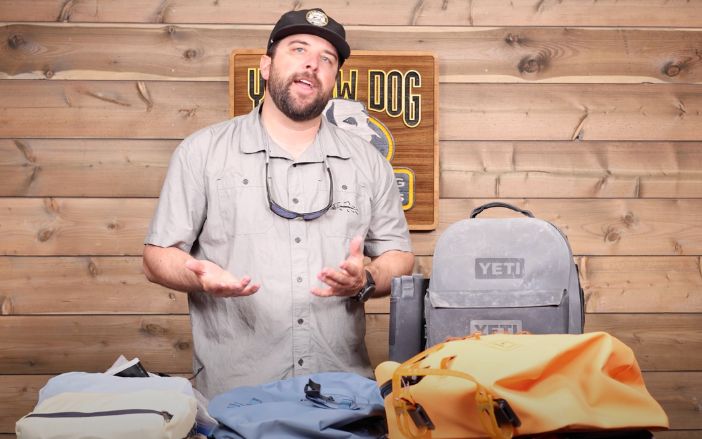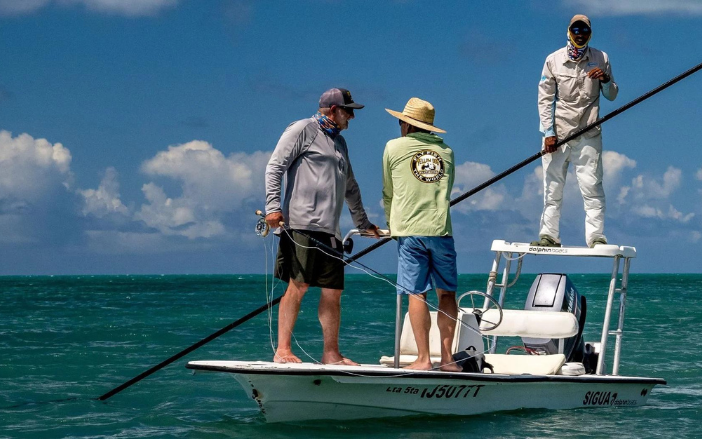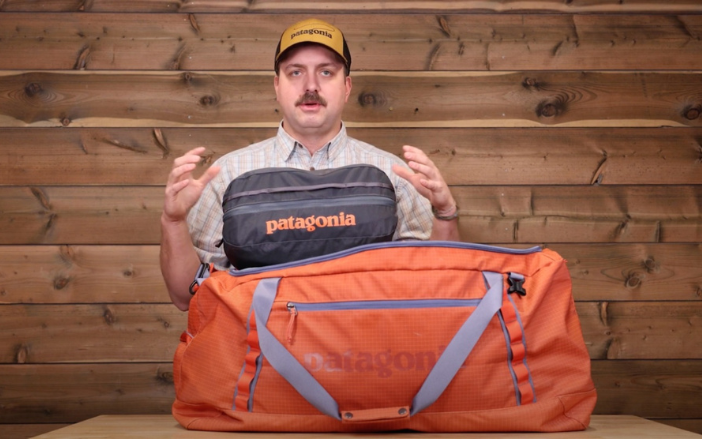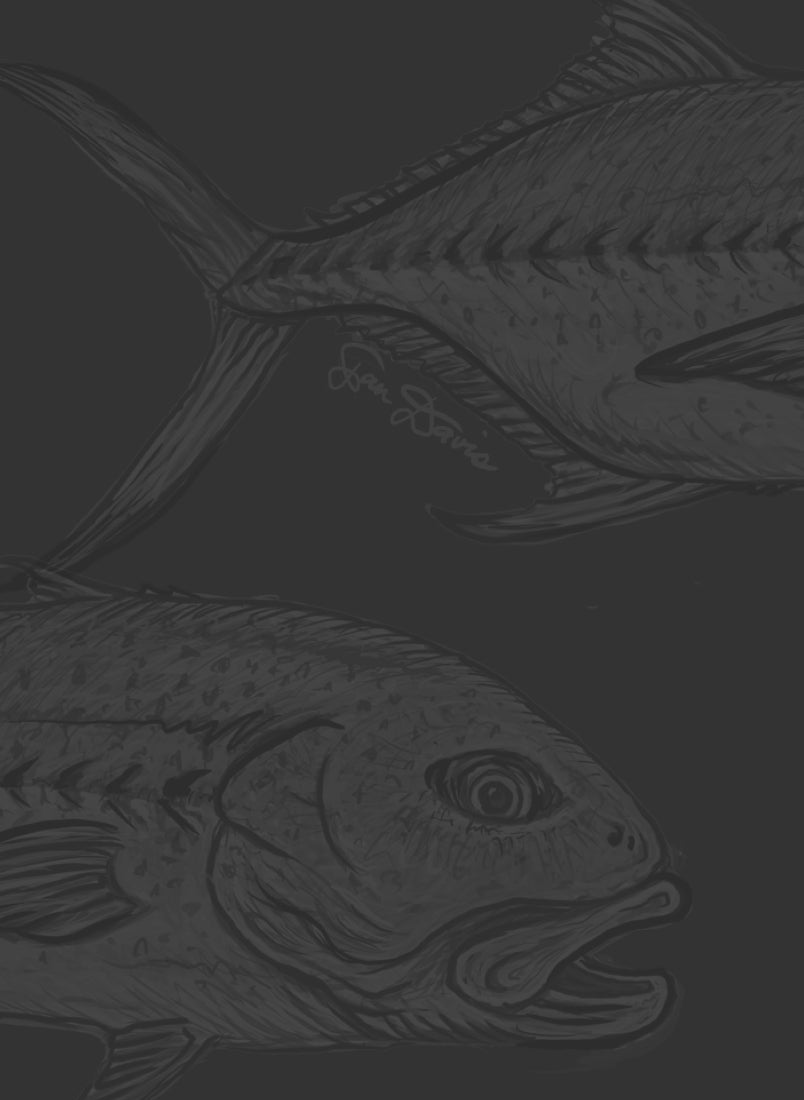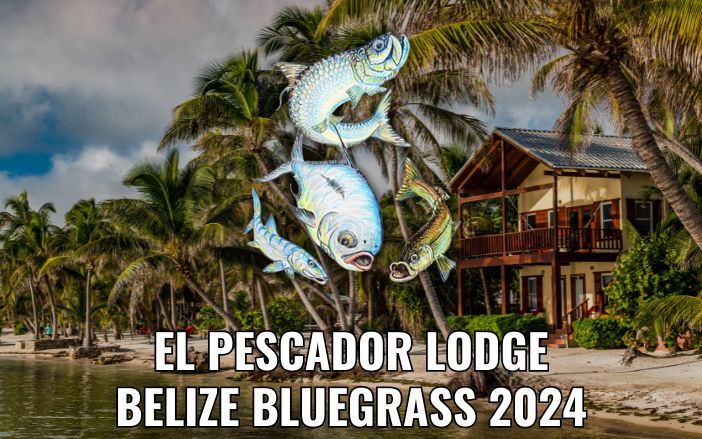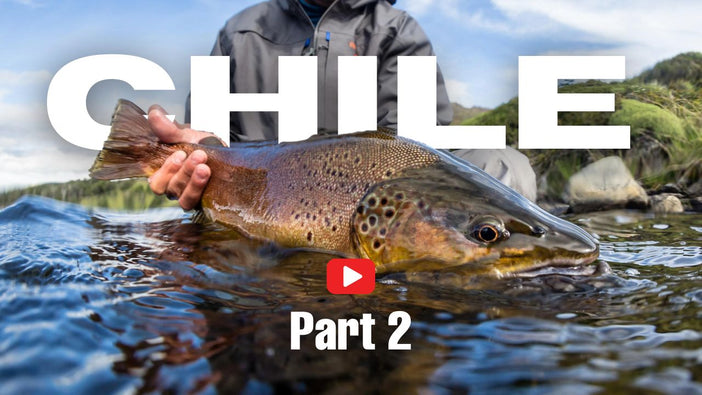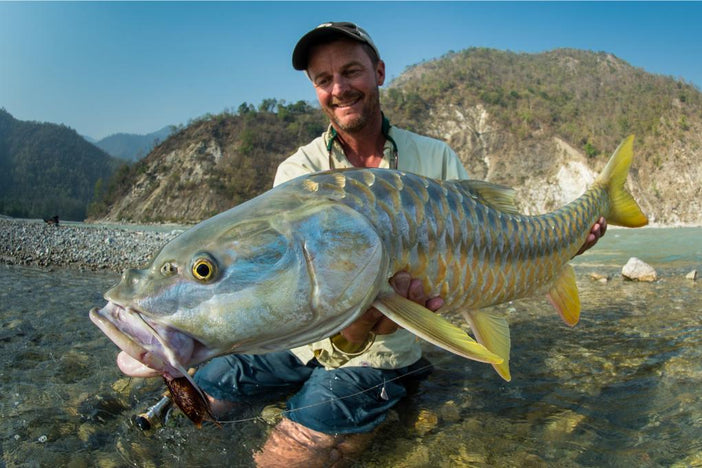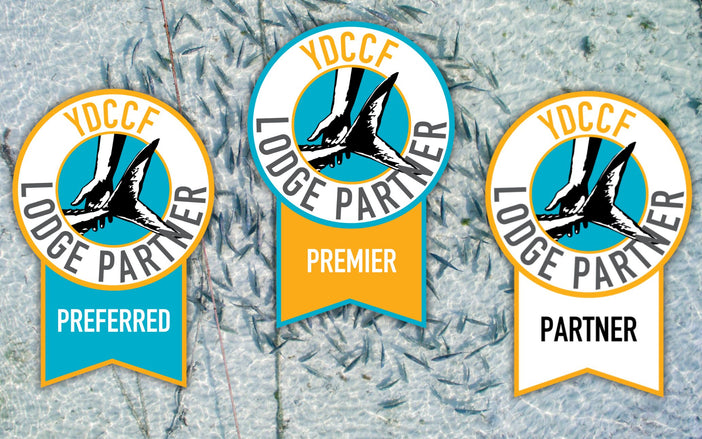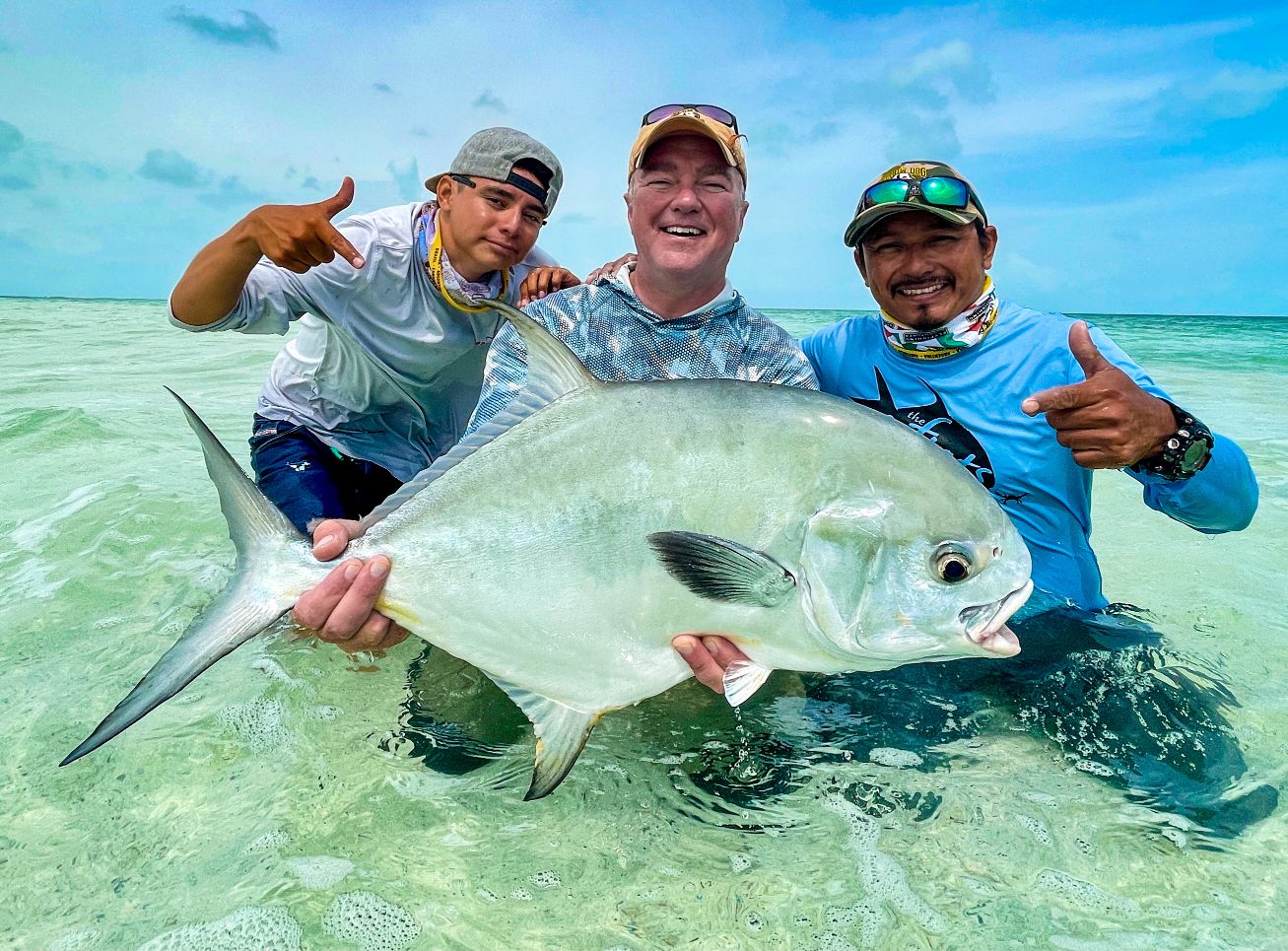Starting anything new can be overwhelming at first. With so much information readily available, literally, at your fingertips even knowing where to start can be impossible. However, as the saying goes, “there’s never a time like the present.” We’ve put together some tips, tricks, and pointers, for anyone looking to get into the world of saltwater fly fishing to make getting a start all that much easier. Tarpon, bonefish, and permit are known as “the big three” and are the most popular saltwater gamefish. For that reason, we’ve gone over the basics of fly fishing for these terrific species. Although this guide is not exhaustive and there are countless nuances when it comes to saltwater fly fishing, we feel this is as good a place as any to start.
Tarpon Fly Fishing
It can be a little daunting just starting out fly fishing for tarpon. There are folks who exclusively focus on tarpon and their careers revolve around hunting the game fish and their knowledge is unparalleled. Hooking into a big tarpon for the first time is incredibly memorable and accompanied by a fair share of adrenaline. Applying the necessary pressure and making sure the fish doesn’t spit the fly is the battle. Once in hand though, you’ll immediately be trying to figure out how to land another one. With a few tips and tricks, any first-time tarpon angler can be well on their way to a lifelong love affair with this beautiful fish.

The number one thing any angler can do to improve their success is listen to the guide. We can’t say this enough. Listen to your guide. Don’t guide your guide. Listen to your guide!
One of the most important factors to consider when chasing tarpon is to make sure you are fishing in a destination that has lots of tarpon. That seems simple enough but you’d be surprised how many people simply fish in the wrong places. Furthermore, not all tarpon destinations are created equal- some are more difficult than others.
For every beginner, the name of the game is getting shots at fish. As the age-old adage goes, practice makes perfect. Find a destination and guide that puts you on fish and opportunities for lots of shots.
Before you find yourself battling with a tarpon you’ll need to deliver the fly to the fish. Practice, practice, practice your casting. A lot of headaches are avoided if you’re prepared for your trip and the most beneficial thing you can do is to practice your casting. Practice double hauling in the front yard or park. Find a target and practice making long accurate casts. Practice your backhand cast- you’ll be thanking yourself later when your guide’s putting you on a big cruising tarpon, and you have to deliver a cast at a second’s notice.

The second most important aspect to remember is that you’re not trout fishing- don’t trout set. If you’re trout setting, you’re pulling the fly right out of the fish’s mouth. You’ll have to learn to strip set where it’s essential to keep the rod tip down and when the fish takes the fly, give one long strip to set the hook in its mouth.
You’re hooked up with a big tarpon, now the real challenge begins. Bow to the king. This is the saying among tarpon anglers. It’s meant to encourage the angler to point the rod tip to the fish – literally, bow down and reach your rod tip outwards. This ensures that when the fish jumps, there’s slack in the line and it doesn’t land on a taut leader and break it.
Hold the rod against or near your lower abdomen with the tip pointed straight at the fish. This applies more pounds of pressure on the fish when it’s in the water as opposed to a rod held 90 degrees to the water. This will utilize the strength of your leader and tippet.

Use angles to your advantage and when the fish runs point your rod in the opposite direction. The angle will substantially increase the pressure you put on the fish.
Once the tarpon is near the boat be sure to handle it appropriately. For smaller juvenile tarpon, at times, it can be fine to take the fish out of the water. But for larger tarpon, be sure to keep them in the water. In most cases, this calls for the angler to get in the water with the fish to get a photo. You should never pull a large tarpon out of the water and hang them from their head. Handling these big fish this way can damage their internal organs which could ultimately lead to their death. Make sure to be a responsible angler.
Aside from catching and landing tarpon techniques, it’s also important to have the appropriate gear. Large tarpon are hard on rods, reels, and lines- be sure to buy gear that can stand up to the abuse. If a component in your setup lacks the necessary grit for a tarpon fight, it’ll be apparent quickly.
Every serious angler should try their hand at tarpon fishing. It’s fun, exhilarating, and, more often than not, addicting!
Permit Fly Fishing
Permit are the holy grail of saltwater fly fishing. Every ounce of an angler’s skill goes into trying to get a permit to take a fly. They’re finicky, spook easily, and have the utmost discretion when it comes to what they eat. For these reasons, permit will never be considered a “beginner” fish. However, a few things can help if you’re just beginning to dabble in the exhausting and eventually rewarding world of permit fishing.

The number one thing you can do to increase your chances of catching a permit is to find yourself a good permit guide. All guides aren’t created equal so save yourself the headache and try to find the best one on the flats.
Other than listening to your guide, make sure you’re always ready. Make sure your line is ready to shoot when a fish is spotted and be alert and attentive when poling the flats. This way, when the shot presents itself, you can deliver the fly at a second’s notice. But that brings us to the second part of delivering the fly: casting.
Maybe the most beneficial thing you can do before a salt trip is to practice your double haul. With permit the name of the game is not so much how far you can cast but how accurately. Practice double hauling in a park or clearing with some hoola hoops or plates to improve your accuracy.

Another tip for casting and one that comes from renowned permit guides, Justin Rea and Greg Vincent, is to keep your fly line between your index finger and thumb when casting. Instead of letting go, keep the line between your fingers allowing you to pinch it and bring the fly to a stop at the correct distance. You’ll be thanking yourself for all the preparation when you’re on the flats trying to land your fly in front of a permit.
Once your fly is delivered to where it needs to be, it’s game on. If your guide says strip, then strip! If the fish is nosing around in the mud, keep the fly dead still. Stay calm, collected, and alert. With some practice and preparation, you too can be landing permit. Be sure to check out all of Yellow Dog's fantastic permit fishing destinations.
+ Listen to these WAYPOINTS Podcasts on Permit Fishing:
- WIL FLACK: Feeding Permit - Tips and Techniques for Chasing the Black-Tailed Devil
- JESSE COLTEN: The Xcalak Episodes Part 2
Bonefish Fly Fishing
Bonefish may be the ultimate fish for an introduction to saltwater angling. Bonefish are fast, aggressive, and provide that rush of adrenaline every angler seeks. At times they can be difficult to spot and catch but with some pointers, everyone can be well on their way to landing their first bonefish. The first thing – and we say it all the time – is to listen to your guide. They have spent more time poling the flats looking and hooking into bonefish than you could possibly imagine. If they say there’s a fish 50’ at 9 o’clock take the shot. Just because you don’t see it, doesn’t mean it’s not there. Trust your guide’s judgment and eyes.

The second thing is to make sure you’re traveling to the right place to catch bonefish. Not all bonefish fisheries are created equal and furthermore not all bonefish fisheries- even in bonefish destinations like the Bahamas- are created equal. Make sure you do your homework and go somewhere that offers lots of shots at bonefish.
For every beginner the name of the game is to get in front of as many bonefish as possible and as many scenarios as possible- this is the only way to improve. So the logical place to start is somewhere that offers lots of shots at fish.
The second piece of advice is to practice your casting with the rod you plan to take on your trip. Get in the backyard and practice double hauling, better yet wait for a windy day and get out there and practice casting. It’s a humbling experience if not acquainted with the struggle of casting a long leader into the wind at a tiny target. Once you get your fly to the right spot and the fish eats it, you’ll want to make sure you strip set.

Strip set by pausing a second once the fish takes the fly, and then take one long strip that will securely lodge the fly in the bonefish’s hard mouth. Make sure to keep the rod tip down, and don’t trout set the hook. Once the fish is on, you’ll want to clear the line through your rod guides. Make sure the line is free of snags and snarls, as a line wrapped around an object or the butt of your rod could mean losing your fish. Once your fish is to the boat you’ll want to make sure to properly handle it. Long exposure out of the water can overly stress the fish and lead to higher mortality rates. Be sure to know how to properly handle a bonefish.
The world of saltwater fly fishing can be intimidating but there is no reason that you should be deterred. Saltwater fly fishing is fun, exciting, and incredibly rewarding. Don’t be scared and jump in the deep end!
Get Prepared For Your Next Trip:
+ Shop our Bonefish Equipment List
+ Shop our Permit Equipment List
+ Shop our Tarpon Equipment List
Relevant Articles:






